Full Name 岳敏君 Yue Minjun Role Artist Nationality Chinese | Movement Cynical Realism Period Cynical realism Name Yue Minjun | |
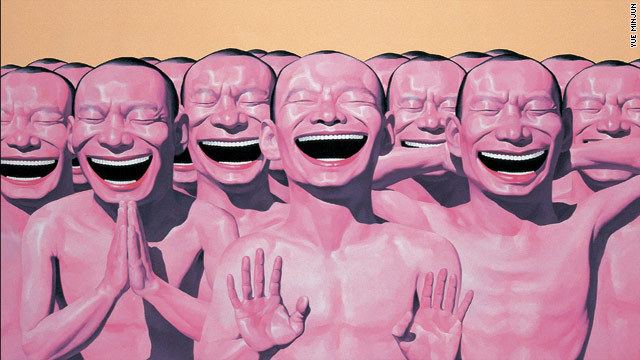 | ||
Known for Painting, Installation art, Sculpture | ||
Education Hebei Normal University | ||
Schoeni art gallery yue minjun documentary
Yue Minjun (Chinese: 岳敏君; born 1962) is a contemporary Chinese artist based in Beijing, China. He is best known for oil paintings depicting himself in various settings, frozen in laughter. He has also reproduced this signature image in sculpture, watercolour and prints. While Yue is often classified as part of the Chinese "Cynical Realist" movement in art developed in China since 1989, Yue himself rejects this label, while at the same time "doesn't concern himself about what people call him."
Contents
- Schoeni art gallery yue minjun documentary
- Yue minjun the grassland series
- Early life
- Artistic career
- Shows
- The Environment of Development
- Public Collections
- References

Yue minjun the grassland series
Early life
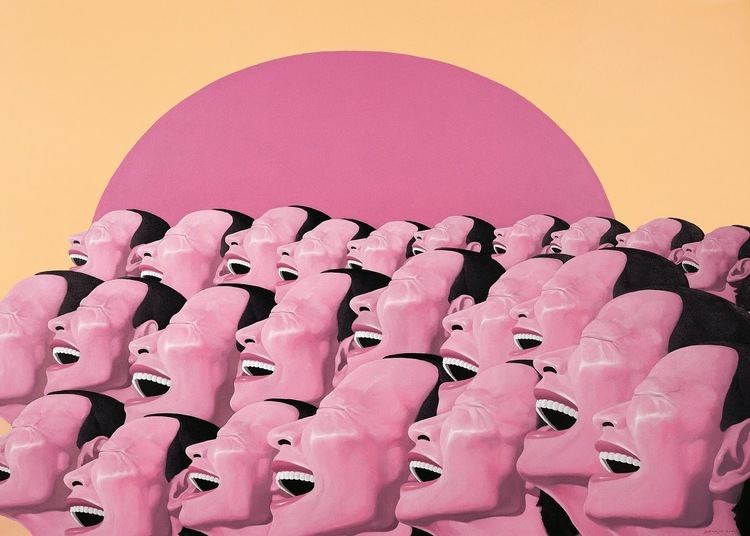
Yue Minjun was born in 1962 in the town of Daqing in Heilongjiang, China. Yue Minjun’ family was working on an oilfield when he was young, also he taught art in oil school for a short time. In 1980, he graduated from high school, after that he went to Tian Jing National Company. In 1983, he decided to go to He Pei. He became an electrician in He Pei. He was painting and working at the same time. Normally he could both continue painting and working for 20 days. This life experience gives us a trail of why the skin color from his work is red. In the 1980s, he started painting portraits of his co-workers and the sea while he was engaged in deep-sea oil drilling. In 1989, he was inspired by a painting by Geng Jianyi at an art show in Beijing, which depicted Geng's own laughing face. In 1990, he eventually moved to Hongmiao in the Chaoyang District, Beijing, which was also home to other Chinese artists. During this period, his style of art developed out of portraits of his bohemian friends from the artists' village. It is important to note that Yue had been living a "nomadic" existence for much of his life, because his family often moved in order to find work on various oilfields. Labeled by critics as a very influential member of the Cynical Realism movement he found success and praise for his signature images in a variety of including sculpture, water color, and print. Affected by Chinese modern art revolution, the whole country was breaking down old thoughts and doing something new. This is also really important for Yue and he said he was grew up in such a closed world, the military families give him a protected feeling, but everything happened during that time totally changed his thoughts.
Artistic career

The roots of Yue Minjun's style can be traced back to the work of Geng Jianyi, which had first inspired Yue with his work of his own laughing face. Over the years, Yue Minjun's style has also rapidly developed. Yue often challenges social and cultural conventions by depicting objects and even political issues in a radical and abstract manner. He has also shifted his focus from the technical aspects to the "whole concept of creation". In the mid 1990s, the godfather of Chinese contemporary art Mr. Li Xianting tagged Yue Minjun a Cynical Realism mark, Cynical Realism means describe the living status with a cynicism and mocking ridicule art attitude, using self-opinion to understand political and commercial. "Yue’s pieces are mocking himself and the community, free himself and vent his emotions"." Art critics have often associated Yue with the Cynical Realism art movement in contemporary Chinese art. Yue is currently residing with fifty other Chinese artists in the Songzhuang Village. Since his debut, the work of Yue Minjun has been featured in numerous galleries in Singapore, Hong Kong and Beijing. His piece Execution became the most expensive work ever by a Chinese contemporary artist, when sold in 2007 for £2.9 million pounds (US $5.9 million) at London's Sotheby's. Until its sale at Sotheby's Hong Kong in 2007, this painting had been owned by Trevor Simon, a junior investment banker who bought it with about a third of his salary while working in the region. Simon kept this painting in storage for 10 years as required by the conditions of sale. The record sale took place week after his painting Massacre of Chios sold at the Hong Kong Sotheby's for nearly $4.1 million. 'Massacre of Chios' shares its name with a painting of the same name, by Eugène Delacroix, depicting the 1822 event in Greek history. As of 2007 thirteen of his paintings had sold for over a million dollars. One of his most popular series was his "Hat" collection. This series, pictures Yue's grinning head wearing a variety of hats—a chef's hat, a Special Forces beret, the helmet of a British policeman, Catwoman's mask, and so on. The artist tells us that the series is about a "sense of the absurdity of the ideas that govern the sociopolitical protocol surrounding hats." The series nicely illustrates the way that Yue's character is universally adaptable, a sort of logo that can be attached to any setting to add value. When asked to participate in the Venice Biennale in 1999, Yue opted to begin fabricating bronze sculptural versions of his signature self-portrait paintings, playing off China's famous Qin Dynasty army of terracotta warriors. While the ancient sculptures are known for the subtle individuality of each of the warriors, his cackling modern-day version are relentlessly identical, cast from the same mold. In Noah's Ark, six of Yue's self-portraits sit in a small rowboat on a blue sea, squatting together, gripping their knees and screaming in silent laughter. In Solar System, three identical Yues are cackling at the bottom of the canvas, each clad only in underwear, giant planets wheeling behind them in outer space. During the "Year of China" in France in 2003/2004, he participated to the exhibition "China, the body everywhere?" including 39 Chinese contemporary artists such as Zhang Xiaogang, Wang Guangyi, Fang Lijun, Yang Shaobin at the Museum of Contemporary Art of Marseille.
Yue Minjun’s first museum show in the United States took place at the Queens Museum of Art, Queens, New York. The show, Yue Minjun and the Symbolic Smile, featured bronze and polychrome sculptures, paintings and drawings and ran from October 2007 to January 2008.
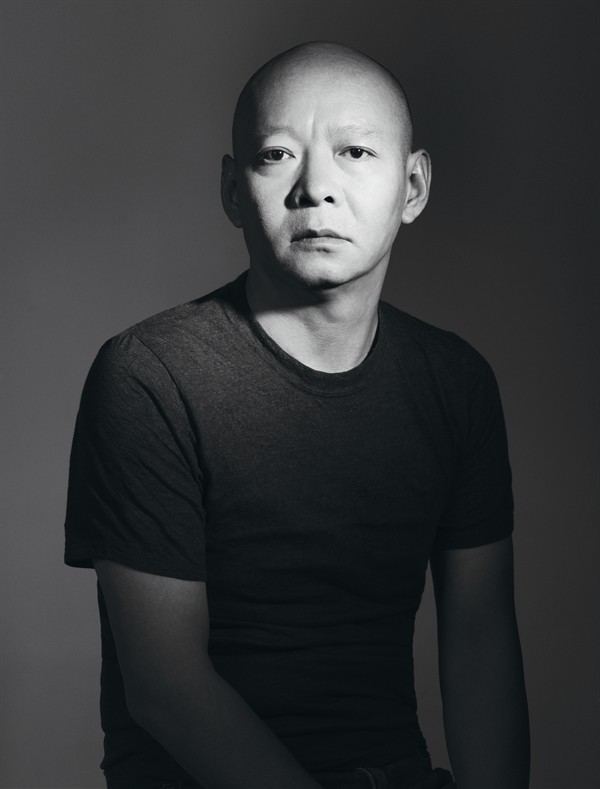
Yue Minjun, L'Ombre du fou rire
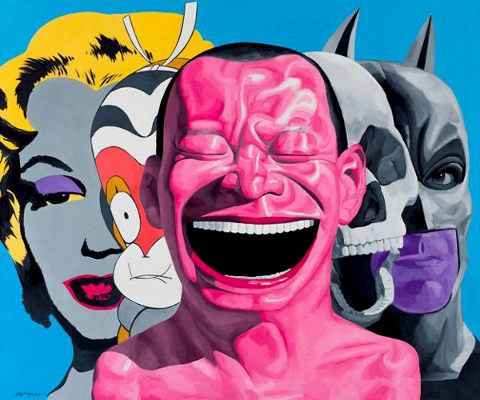
The first major exhibition in Europe dedicated to the artist from November 14, 2012 to March 17, 2013. The Fondation Cartier pour l'Art Contemporain presented the first major European exhibition dedicated to the Chinese artist Yue Minjun, a unique opportunity to discover the work of an artist who, in spite of his international renown, continues to maintain a relatively low profile.
Shows
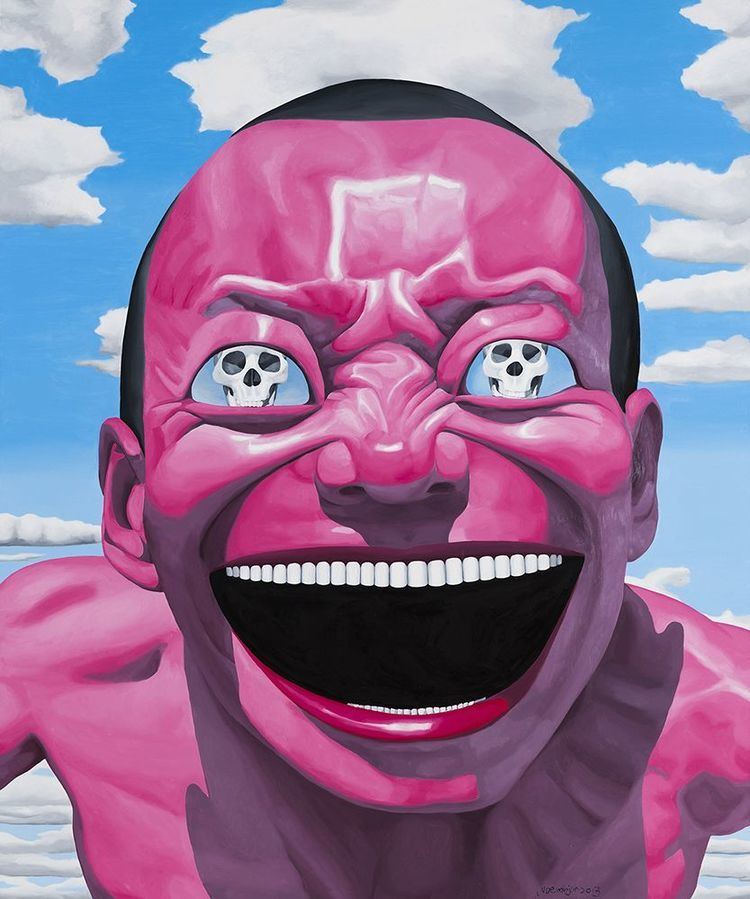
2012 YIRONGLIANGJIANG, Yang Zi modern Art Center, Chong Qing, China
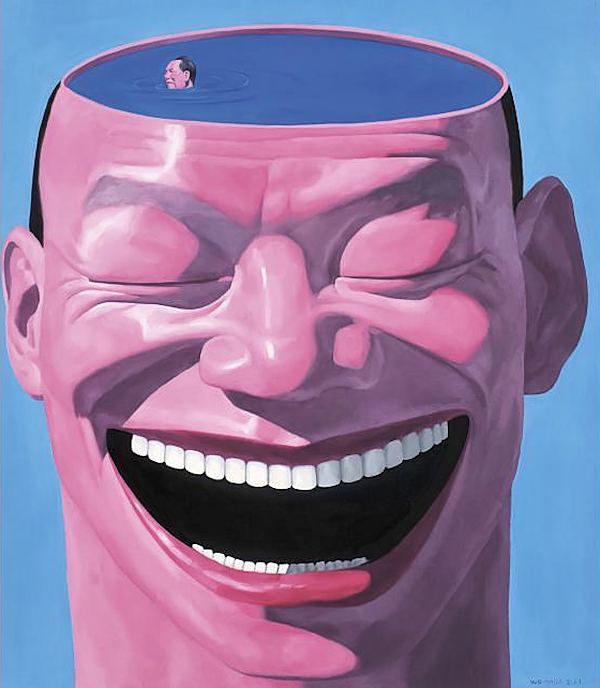
2011 Yue Minjun: Road, Peisi, Beijing, China

2009 Archaeological discoveries of the year 3009, Daily Museum, Beijing, China
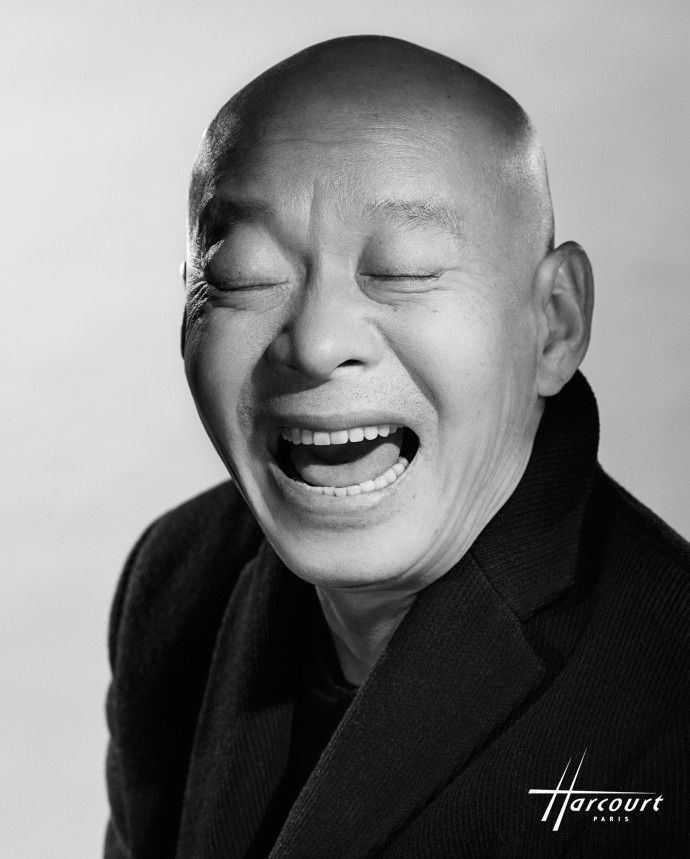
2007 Yue Minjun: Iconic Smile, Queens Museum of Art, NY, U.S.A.
2006 Rework Series, Enrico Navarra gallery, France
2004 Sculpture and Painting Exhibition, Shao Li Gallery, Hong Kong
2004 The Dream of Dragon, Ireland Modern Art Museum
2004 Shang Hai Art Show 2004, Shang Hai, China
2004 KuangChou Art Show 2004, Corea
2004 Dune Sculpture, Enrico Navarra gallery, France
2004 Han Yaxuan 20th Anniversary Show, Hong Kong Art Center
2004 Figure-China, Marseille Contemporary Art Museum, France
2003 Arts From China, Edwin Gallery & National Gallery in Jakarta, Indonesia
2003 Yue Minjun, Meile Gallery, Switzerland
2003 Irony in Beijing, Prüss & Ochs gallery, Berlin, German
2002 Bath in The Giggle, Soobin, Singapore
2002 Rework, Shi Fang Art Center, China
2000 The Red Sea, Chinese contemporary art gallery in London, UK
The Environment of Development
As an artist, Yue grew up in a time period of market economic policies starting release and accelerated developing, also this is period of prosperity of world economic. In that case, the environment pushed Yue and a group of modern artists to grow fast. Certainly, Yue is a successful artist in that group.
Public Collections
CP Art Foundation, Indonesia
Cheng Du Shang He Museum, China
hen Yang Dong Yu Art Museum, China
Guang Dong Art Museum, China
Shen Zhen Art Museum, China
Museum of Modern Art, San Francisco, America
Museum of Architecture, Chicago, America
Denver Art Museum, America
Francois. Mitterrand Cultural Center, France
Busan Museum of Art, Korea
Arario Galleries, Korea
Union University Art Museum, Singapore
